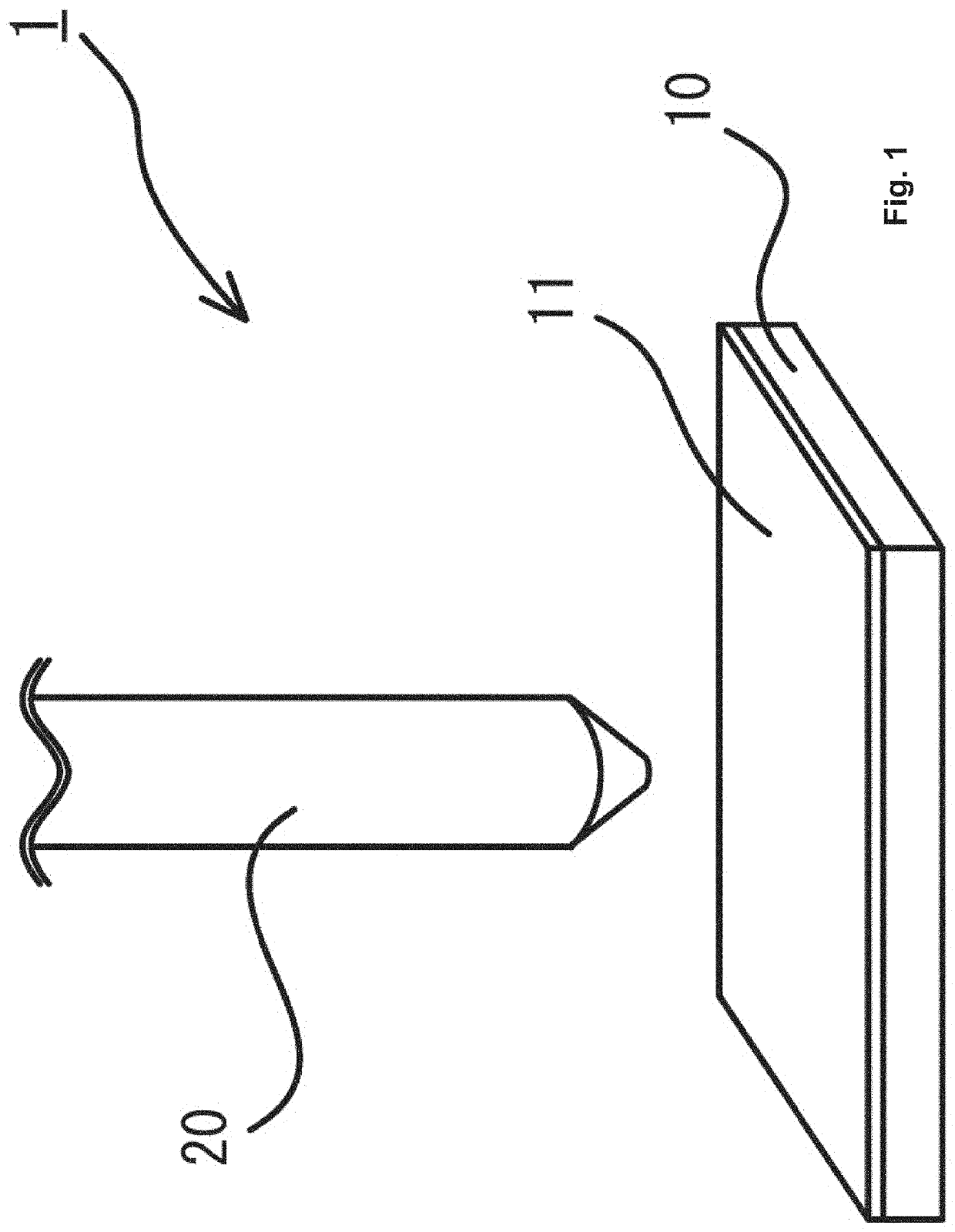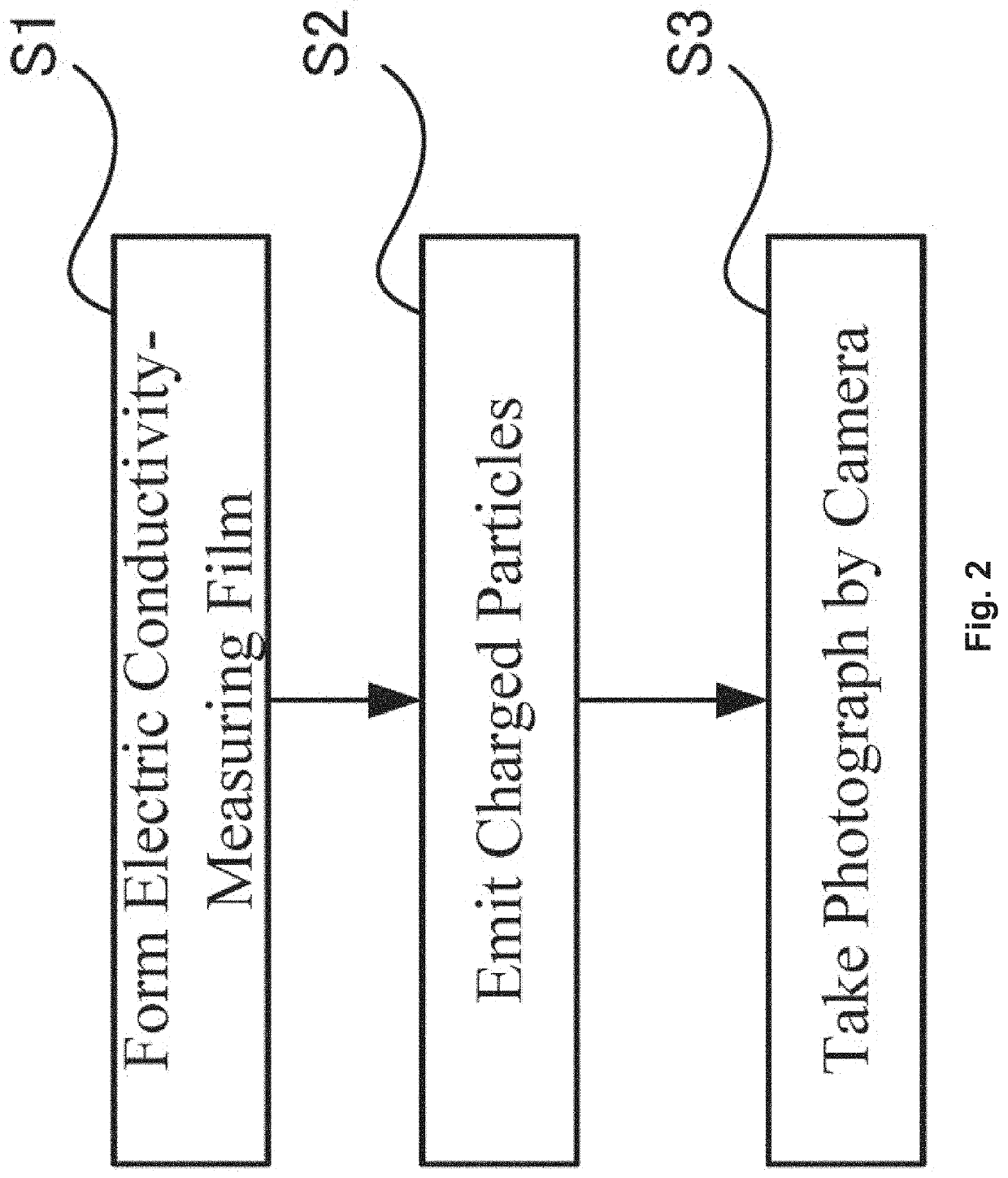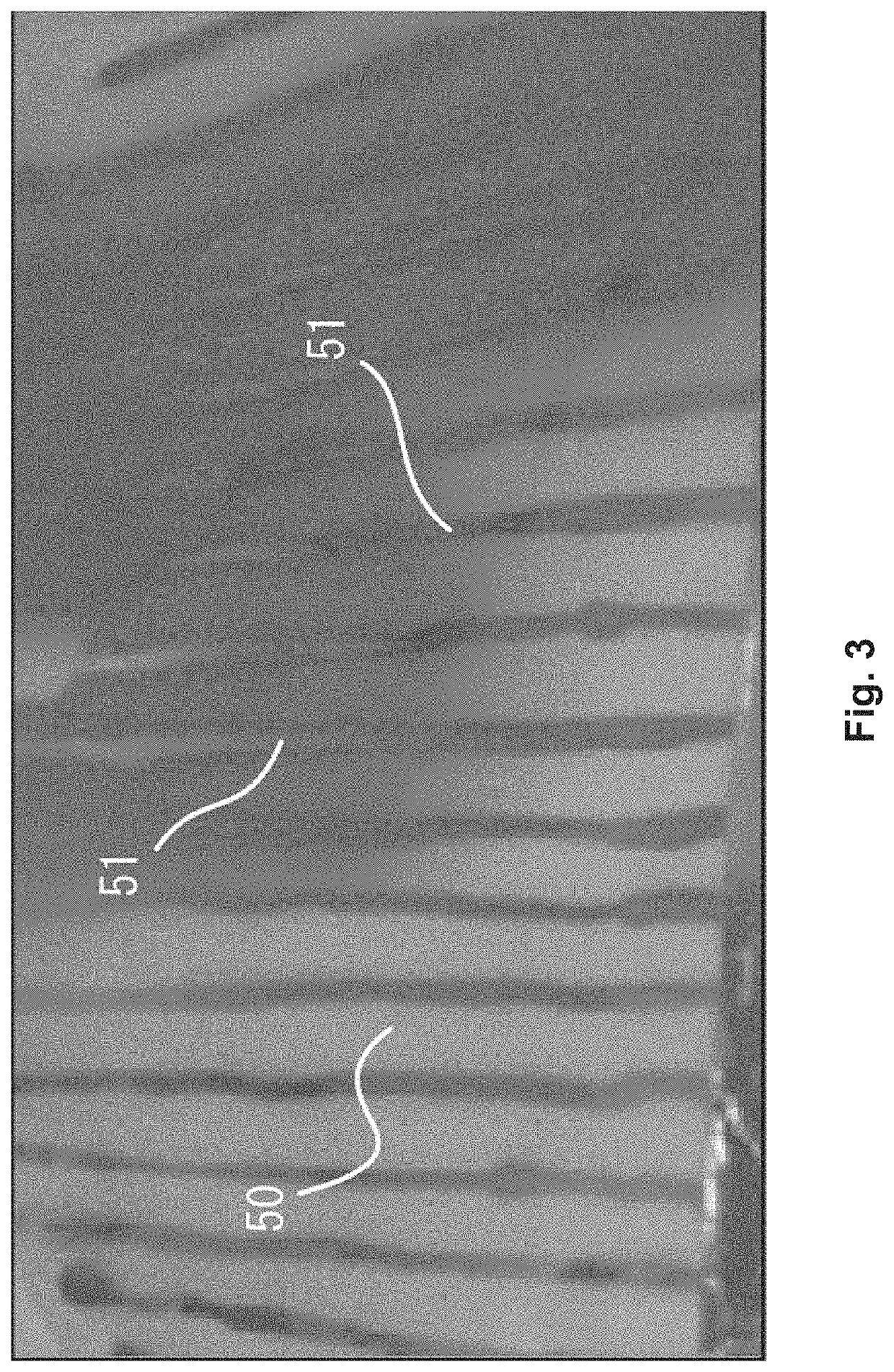Electric conductivity-measuring material, electric conductivity-measuring film, electric conductivity-measuring device, and electric conductivity-measuring method, as well as electric resistivity-measuring material, electric resistivity-measuring film, electric resistivity-measuring device, and electric resistivity-measuring method
a technology of electric conductivity and measurement method, which is applied in the direction of material analysis using wave/particle radiation, instruments, and material analysis by optical means, etc., can solve the problems of inability to intuitively understand electric conductivity, inability to measure electric conductivity of each portion of the measurement object, and inability to accurately measure electric conductivity. to achieve the effect of convenient measuremen
- Summary
- Abstract
- Description
- Claims
- Application Information
AI Technical Summary
Benefits of technology
Problems solved by technology
Method used
Image
Examples
embodiment 1
[0095]FIG. 1 illustrates a schematic perspective view of an electric conductivity-measuring device according to Embodiment 1. As illustrated in this figure, in an electric conductivity-measuring device 1 according to Embodiment 1, an electric conductivity-measuring film 11 is formed throughout a surface of a rectangular flat measurement object 10, the electric conductivity-measuring film 11 containing at least one of an fluorescent substance, a luminescent substance, an electroluminescent substance, a breaking luminescent substance, a photochromic substance, an afterglow substance, a photostimulated luminescent substance, and a mechanoluminescent substance.
[0096]In addition, cylindrical charged particle-emitting unit 20 having a taper-shaped tip portion is fixed above the electric conductivity-measuring film 11 by a jig (not shown) so that the electric conductivity-measuring film 11 can be irradiated with charged particles. Specifically, when an electric field (or voltage) is applie...
example 1
[0114]As shown in FIG. 3, a plurality of silver nanoink lines were formed on a polylactic acid sheet (PLA sheet) by using silver ink (DGP-NO, from Advanced Nano Products Co., Ltd). Then, a PLA sheet 50 on which the silver nanoink lines 51 were formed in a stripe shape was made as a measurement object.
[0115]Then, an electric conductivity-measuring film, i.e., non-woven fabric (electric conductivity-measuring sheet 53) into which SrAl2O4:Eu2+ was kneaded was placed on this PLA sheet 50. Next, as shown in FIG. 4, an electrode 55 as a charged particle-emitting unit was placed above the non-woven fabric (distance: 10 mm).
[0116]Thereafter, the measurement object was irradiated with charged particle by applying DC voltage of 3 kV and 1 μA to the electrode 55 to cause corona discharge, the result being shown in FIG. 5. Here, electric conductivity of the PLA sheet is 1.00×10−15Ω−1·m−1 or more, and electric conductivity of the silver nanoink lines is 1.68×10−2Ω−1·m−1.
[0117]As shown in FIG. 5,...
example 2
[0118]As shown in FIG. 6, an electric conductivity-measuring film, i.e., non-woven fabric (electric conductivity-measuring sheet) into which SrAl2O4:Eu2+ was kneaded was placed on a packaging box (measurement object) with characters and the like printed on it. Here, portions with characters printed have higher electric conductivity than portions without characters printed.
[0119]Then, as in Example 1, the measurement object was irradiated with charged particle by applying voltage / current (3 k, 1 μA) to an electrode located above (distance: 10 mm) to cause corona discharge. The results are shown in FIGS. 7 and 8. FIG. 7 is a photograph just after the measurement objectwas irradiated with charged particles, and FIG. 8 is a photograph after a while since the measurement object was irradiated with the charged particles.
[0120]As can be seen from these figures, portions of the electric conductivity-measuring film corresponding to the printed characters and the like momentarily emitted ligh...
PUM
| Property | Measurement | Unit |
|---|---|---|
| thickness | aaaaa | aaaaa |
| thickness | aaaaa | aaaaa |
| distance | aaaaa | aaaaa |
Abstract
Description
Claims
Application Information
 Login to View More
Login to View More - R&D
- Intellectual Property
- Life Sciences
- Materials
- Tech Scout
- Unparalleled Data Quality
- Higher Quality Content
- 60% Fewer Hallucinations
Browse by: Latest US Patents, China's latest patents, Technical Efficacy Thesaurus, Application Domain, Technology Topic, Popular Technical Reports.
© 2025 PatSnap. All rights reserved.Legal|Privacy policy|Modern Slavery Act Transparency Statement|Sitemap|About US| Contact US: help@patsnap.com



